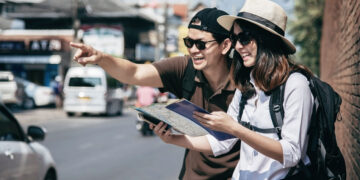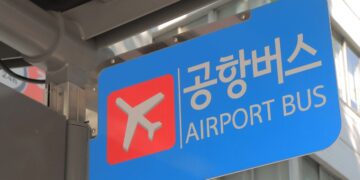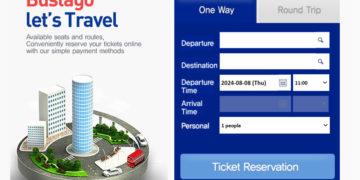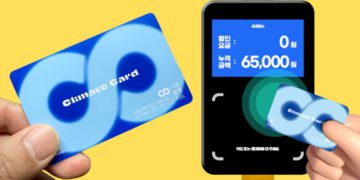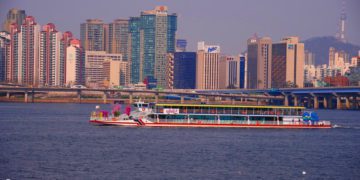Last Updated on 2 years by admin
As you land in Korea, hiring a taxi to the destination is easy with this ultimate guide to taking a taxi and other relevant tips for tourists in South Korea.
After making your way through Incheon Airport and landing in Korea, you can finally breathe Seoul’s “fresh” air. However, you have to take a taxi and are unsure of what to do. Here, we’ll go over everything you’ll need to know about Korean taxis, including how much they cost and how far they travel in various cities. We’ll also cover how to hail a taxi and other information that will help you feel more at home than a tourist.
Different Types of Taxis
Regular Taxis
The most prevalent type of taxi in Korea is the normal cab. They can be silver, white, orange, or in extremely rare circumstances, black. If you’re outside the airport or such, look for the line that contains at least one orange or silver car if you notice a long line of taxis. Nine times out of ten, a taxi that you wave down as it passes will be a regular cab.

You will also find some blue sedan taxis that are electric and environmentally friendly. The fares are the same as the other cabs and are most commonly available in Seoul.
The first two kilometers of the trip are covered by the 3,300-3,800 won beginning charge. In Seoul, the base fare is 3,300 won. The meter will then run up 100 won every 132 meters after that (it also varies from region to region). However, if there is traffic, the 100 won is added every 31 seconds. However, this fare is only valid throughout the day. The base fare will be 4,600 won at night. Make sure the meter is always on to prevent any issues. Never give cash to a taxi driver who requests it before the trip even starts.
Black/Deluxe Taxis
The Deluxe Taxi will be ideal for you if you want a fancier automobile, a safer driver, or to transport a client to a meeting. You can reserve one in advance or find one among the taxi farms, generally at the front or in a designated lane. For the first three kilometers, the beginning charge for these taxis is 6,500 won; after that, the fare increases by 200 won for every 151 meters (it also varies from region to region). The cab raises 200 won every 36 seconds if it is in traffic (moving at less than 15 kph), just like a traditional taxi. A conventional cab will be far more effective if you only travel to a tourist spot because these deluxe cabs are significantly more pricey.
International Taxi
If you are concerned about traveling with a driver who only speaks Korean, you can opt for International taxis. The drivers are familiar with foreign languages like English, Chinese, or Japanese. This taxi looks similar to the standard taxis but they have ‘International Taxi’ written on the top and side of the vehicle.

Kakao Taxis
You can call taxis without ever speaking Korean if you have the Kakao messaging software, which also offers “Kakao Taxi.” These cabs are “normal cabs” and are not more expensive. If no other taxi agrees to pick you up, you can order a “smart taxi” for an additional 1,000 won. Larger cities like Seoul, Daejeon, Daegu, and Busan don’t typically have issues with this. In smaller towns, Kakao Taxi can struggle to locate one near you.

Things to Know While Taking a Taxi in Korea
Late Night Additional Fee
All the taxis have a 20% surcharge if you are taking the taxi late at night, from 10 p.m. to 11 p.m. If you are traveling outside the city, there’s a 40% surcharge post-midnight, from 2 a.m. to 4 a.m. This surcharge is lower for Busan, Daegu, and Incheon, where you have to pay a 20% surcharge. For deluxe taxis, the surcharge is fixed at 20% for late-night and out-of-city travel.
Meter
Ensure the meter is set to 0 won before the trip when you get into a cab. The vehicle will then be started by the driver, starting at the base fare. FIRST, NEVER ACCEPT A TAXI THAT ACCEPTS CASH. When folks have had a few drinks, this occasionally occurs near clubs. You can end up paying much more than the trip’s actual cost. Therefore, remember to always use the meter.
Tipping
Tipping is not a custom in Korea. The same thing applies to cabs. There is absolutely no tipping once you have paid.
Paying for taxis
You can use cash, a credit card, or a T-money card to pay for a taxi in South Korea. For a variety of reasons, taxi drivers tend to prefer cash, but they are also required by law to accept cards. Although there may frequently be an “issue” with the card reader, this is frequently untrue. They must accept credit cards if you want to make a purchase.
Always ask for a receipt
Every fare is completed with a receipt. Get one right away for a few reasons. First, confirm that the total is accurate and that no extra fees have been applied. However, you may also use the receipt to phone the cab and arrange to meet them if you unintentionally left something in it. The receipt will come in handy if your driver has any issues.
Scams (bonus tips)
Rarely, while things have gotten much better, some drivers may take advantage of a tourist’s ignorance to extort additional funds from them. When you reach your destination at the conclusion of the fare, the driver may press a button on the meter to add a few Won. This could explain why the meter suddenly jumps up when the driver clicks a button at your stop. Another is that the driver can choose a complicated route or make extra turns just to raise the fee. Once more, if you see that you are traveling far from your destination, inquire about why and continue to do so.
Toll tax
You must pay to use a toll road like a freeway, so keep that in mind. Although it is typically relatively low, bear that in mind. For example, if you take a taxi from Busan Station to Gwangalli Beach (about a 30-minute ride), the toll road will be used, and the final fare will increase by 1,000.
In the end
Taxi rates in South Korea are reasonable compared to those in other nations, making them a viable choice when trying to get somewhere.
27,747 total views, 5 views today


